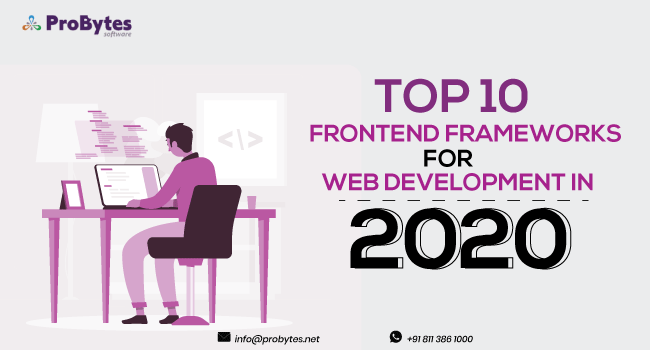Blog Category(283 Blogs)
Prestashop VS Magento: Which One is the Best?
It is expected that global e-commerce business which is expected to reach $4.479 trillion by the end of 2017 will be around 16% of the total retail sales globally.
E-commerce giant like Amazon, e-bay, and Alibaba already have their foothold in the sector.
However, what about small-scale merchants or bigger business groups who wish to start their own online store?
They can rely on e-commerce platforms which offer a wide variety of option for starting their own store.
Prestashop and Magento is one of such open-source platforms and are the most famous at the moment.
Even though the target market is different for both of them let’s see what’s the result when a head on comparison happens between Prestashop VS Magento.
Installation
1) Prestashop:
Prestashop is insanely easy to install. An installation assistant will guide the user through the entire process and everything will be over within no time.
However, the ease of installation will cost the user command over the website in certain aspects.
2) Magento:
In Magento, it’s a bit different. The installation should be directly done on the server of the host. Since the process is a bit tricky and needs expertise, there are hosting companies which offer this service for a certain cost.
Perks of Prestashop
The basic setup is free of cost and as easy as it can get. However, additional features and themes will cost you.
In short, to make use of the full potential of Prestashop as an e-commerce website you need to add extra features, modules, payment methods, themes, and templates etc.
All these are downloadable from the Prestashop website.
Prestashop supports 65 languages.
However, to avail technical assistance you have to either rely on a well experience Prestashop web development team or have to find the solution in their online forum.
Perks of Magento
Magento is basically suited for bigger online store, the sole reason why they are a bit complicated to install and vivid features they offer.
Magento offers better control over the content inside and supports more than 81 languages.
Its scalable architecture and flexible integration makes it the close competitor of Prestashop.
Price
1) Prestashop:
Both Prestashop and Magento are open source. However, in pricing, they are entirely different.
As mentioned above Prestashop is free of cost for the initial setup. Further addition of themes and modules will cost the user.
What makes Prestashop stand out in the pricing section is its cost-effectiveness. But, Prestashop free edition is basically designed for small-scale merchants.
But for those who are planning to launch a big website they have the enterprise version with much more advanced features.
Click this link for more price related details of Prestashop
2) Magento:
Building a website in Magento requires expertise of skilled developers.
What makes Magento expensive than Prestashop is that it’s heavy and requires a dedicated server to run.
However, Magento provides free add-ons than that of Prestashop but comparing it to the installation and maintenance cost it won’t make much of a difference.
Click this link for Magento’s price related details
Community:
A healthy and helping community is essential for any open source platform.
The community ensures that stability of the software is maintained so that users can enjoy its function seamlessly.
1) Prestashop:
Prestashop has around 1 million community members and solution for almost all the issues will be available in their forums.
2) Magento:
Magento community offers extended support than that of Magento. It is expected that Magento has more than 700,000 community members for assistance.
Modules/Features
Integration
1) Prestashop:
Prestashop integrates well with Google Analytics and eBay and it also integrates with payment solutions like Paypal, Simplify, and Authorize.net etc.
Other commonly used integration of Prestashop includes, Word Press, SEO expert, Amazon Marketplace, Advanced Search 4, Google Merchant Center, Facebook, Twitter, Google Shopping, Newsletter Pro, Facebook, Pixmania, Bitcoin, Mailchimp, Icecat etc.
2) Magento:
Integration of Magento includes, CashOnDelivery, ShipWorks, MageMonkey, MailChimp, Mandrill, osCommerce, Correios, Fontis Australia, BeeTailer, DebitPayment, MigraShop, SOFORT, AddThis, WorldPay, Facebook, Twitter, ePay, Searchanise, GoMage. Open ERP, DHL, Bcash etc.
Special Features
There are certain features of Prestashop which Magento does not have and vice versa.
They are,
Prestashop
- Cron Job set up for exchange rate automatic update
- Importing CSV files to the products
- If a product is disabled it can be re-directed to another one
- robots.txt and .htaccess files can be created automatically
- Security of the website can be enhanced with auto password expiration, password encryption, alterable security permissions etc.
- CSS files can be further reduced to improve the performance of the website
Magento
- Layered navigation which helps in product filtering in the search option itself.
- Captcha option to enhance security
- Separate design for categories and products
- Credit card details can be securely pre-saved for offline payments.
Customizability
1) Prestashop:
When it comes to Prestashop vs Magento, Prestashop has upper hand in this section.
There are around 3,500 plus modules available in Prestashop for website enhancement. Prestashop also has a live configurator to change fonts and colour of the website to attract customers.
2) Magento:
Magento has fewer modules compared to that of Prestashop.
However, that doesn’t implicate that Magento is tough for configuration.
But the only issue here is that Magento is a bit technical and users who are not exposed to such technicalities may find it hard to handle.
Prestashop vs Magento : Who is the Best?
Without no doubt, anyone can say that Prestashop is simple and so easy to handle and is perfect for small e-commerce websites. Considering Magento in this option can be confusing and tedious job.
Magento is designed for huge and complicated websites and is extremely flexible and scalable in that aspect.
In short, there is no winner here to choose from these two is entirely up to you and how big you wish your website to be.

 Python
Python Magento
Magento Odoo
Odoo How To
How To How Much
How Much Yii Development
Yii Development Core PHP
Core PHP Prestashop
Prestashop Latest News
Latest News Education
Education Web Design
Web Design Business
Business Ecommerce
Ecommerce Travel
Travel Banking and Finance
Banking and Finance Web Development
Web Development Ruby On Rails
Ruby On Rails Joomla Development
Joomla Development Ecommerce
Ecommerce Magento Development Services
Magento Development Services Hire a Developer
Hire a Developer Web Crawling Services
Web Crawling Services















